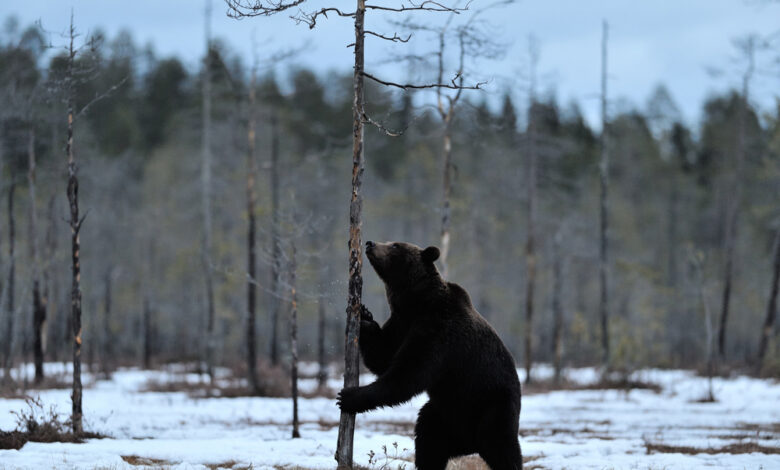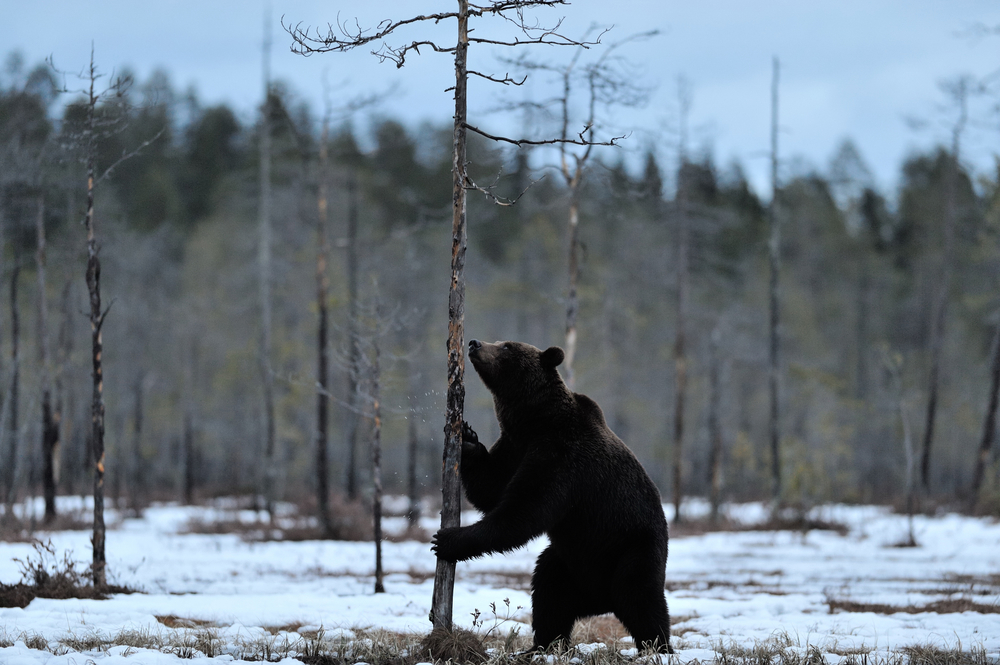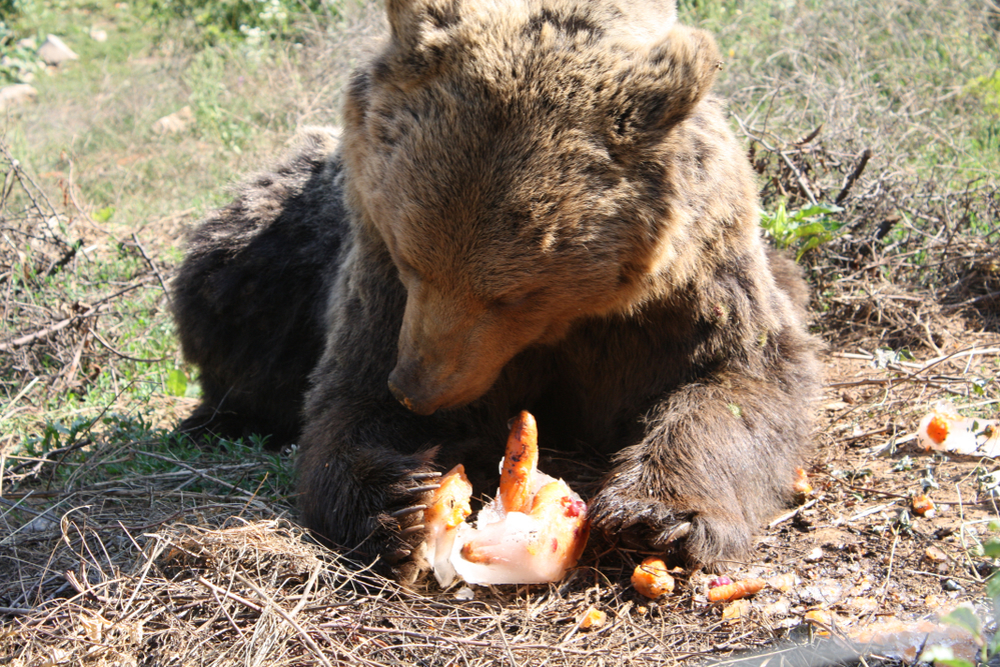A 3,500-Year-Old Frozen Mummified Bear Found in Siberia

The hot new movie of the moment is “Cocaine Bear,” a comedy horror film loosely based on the true story of a black bear that ingested millions of dollars of cocaine lost by drug smugglers. The hot new Siberian permafrost discovery of the moment is also about a bear – it is the true story of a mummified brown bear that lived 3500 years ago and is the first complete frozen bear carcass found of that age which can be thawed and its soft tissue, brain and internal organs examined. Researchers don’t expect to find any cocaine, but they hope this bear will tell them what was going on in Siberia at the time of the formation of the Maya culture in Central America, the 18th Dynasty in Egypt and the time the Phoenicians develop the world’s first alphabet.
“This find is absolutely unique: the complete body of an ancient brown bear.”
Maxim Cheprasov, the head scientist at the Lazarev Mammoth Museum of the Northern Federal University in Eastern Siberia, made the announcement this week of the discovery of the complete carcass of a female brown bear. The frozen bear was actually found in 2020 by reindeer herders on the Bolshoy Lyakhovsky Island, a remote island which is part of northern Yakutia (also known as the Republic of Sakha) in the Arctic Ocean, about 3200 miles east of Moscow. Since the bear was found a little east of the Bolshoy Etherican River, the researchers named her “Etherican brown bear.”

“For the first time, a carcass with soft tissues has fallen into the hands of scientists, giving us the opportunity to study the internal organs and examine the brain.”
The World Mammoth Museum was established in 1991 as a scientific and cultural center for the study of frozen mammoths and their habitats close to where they were found in Yakutia. Up until then, the frozen remains were taken to institutes in Moscow, St. Petersburg and Novosibirsk. As more species were found in the thawing permafrost, the museum expanded to take in wooly rhinos, wolves and bears. Because Yakutia has some of the lowest temperatures in the northern hemisphere, the remains were well-preserved, showing the female brown bear was between two and three years old, measured 1.55 meters (5 feet) in length and weighed about 78 kg (172 pounds). (Video of the exam here.) Those frigid temperatures not only froze the hide, organs and tissues, it preserved parts of the bear’s last meal – plants and feathers from birds.
After cutting through the bear’s thick hide (photo here), the team was first able to determine that it had died from a back injury. According to the reports, the researchers were pleased to see its insides in their natural colors – the bear’s tissues were pink and its fat was yellowish. The scientists used a bone saw to cut through the bear’s skull to get to its brain – catching and removing the dust with a vacuum cleaner. They were then able to conduct examinations on the bear’s brain matter and internal organs,, as well as microbiological, cellular, virological, and genetic studies. The genetic tests revealed a surprise.
“Genetic analysis has shown that the bear does not differ in mitochondrial DNA from the modern bear from the north-east of Russia – Yakutia and Chukotka.”
While it drew its last breath 3500 years ago, “Etherican brown bear” apparently looked a lot like her contemporaries in northern Russia. However, she differed from them in one big way … she lived on an island that is now 31 miles from the mainland. How did she get there? Bears are decent swimmers, but 31 miles is a long way nonstop. It is possible that the waters between the island and mainland Yakutia were frozen solid to hold the weight of the bear. There is also the theory that the island was physically connected to Yakutia back then. The researchers know that if there is one frozen bear on the island there are probably more, so that mystery may be solved as other carcasses are found and their DNA analyzed. The key will be to get there and find them before the non-scientists arrive. The Lyakhovsky Islands in the Arctic Ocean are a treasure trove of frozen woolly mammoths. Unfortunately, where there are mammoth, there are ivory tusks – and the illegal black market trading of them is lucrative. There is also the concern that climate change will melt the permafrost too fast and the well-preserved carcasses will decay before they can be taken to the World Mammoth Museum for research.
“We have a very extraordinarily important chance to have an autopsy and to get a sample from the ancient brown bear. I am sure we can start culturing from that samples and hopefully, when we get the live cell, it will be one of historic achievements, breakthrough for ancient animal study.”
While the brown bear is not extinct, scientists like South Korean cell researcher Hwang Woo-Suk are anxious to retrieve cells which can be cultivated and regrown for better analysis and as an aid for de-extincting some of the other long-gone Siberian creatures – one cave lion cub recovered was believed to have roamed Siberia 28,000 years ago, the head of a steppe wolf was believed to have been frozen for 30,000 years, and a frozen mammoth foot was dated to about 50,000 years ago. If these species are to be de-extincted, it would help to know what they ate when the lived … and to possibly bring back some of that food as well. That’s why the bear’s stomach contents were such an important find.

As the permafrost melts, researchers are also uncovering other prey of the frozen larger predator animals – rodents, birds, and even insects. The goal would be to create a Siberian nature preserve for these creatures – a project that not only would bring back extinct animals but potentially slow down climate change as the animals roam, graze, defecate and do all of the other things that brings back the flora to go along with the fauna, and to cover the ground and keep the permafrost frozen longer.
The brown bears in Siberia today look like the “Etherican brown bear” brown bear of 3500 years ago. Perhaps she can help US survive for another 3500 years.




